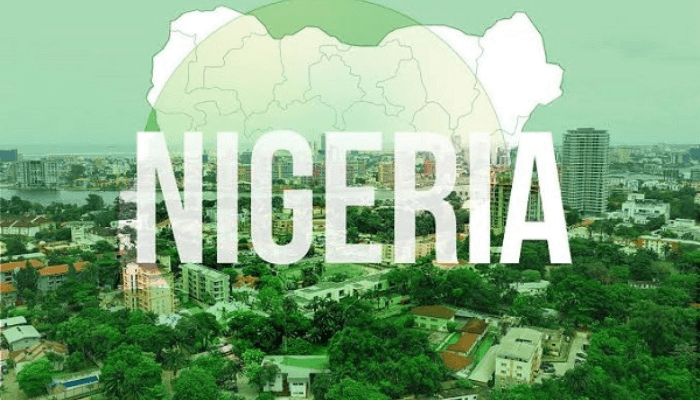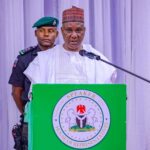Whichever way we look at it, Nigeria has a population problem. It is a problem that will not go away on its own unless we first have a meaningful conversation about it, and then do something about it. But there is a reason why we are not talking about it, even in an election year, let alone trying to do something about it.
Nigeria’s population is one of the most explosive subjects for public conversation in this country, more explosive perhaps, than the so-called unresolved issues of Nigerian federalism such as restructuring, resource control, and the major issues of our identity politics like religion, region, and ethnicity. In fact, public discussions around Nigeria’s ever-growing population are the place where all of these issues converge, making the subject as explosive as any in our national life.
- NIGERIA DAILY: Why Anambra’s Latest Ban Is Setting Tongues Wagging
- Abuja-Kaduna train: FG to take proper precautions before resuming – Minister
We generally talk about our population growth in the stereotypical language and binary framework that presents it as a problem ‘created’ by only one part of the country. The media and pundits will be looking for the wrong reasons like Islam, polygamy, early marriage, child marriage, culture, and others as the explanatory frameworks for understanding the population and its growth in Nigeria. The usual guides for discussing population growth—science, statistical facts, reason, and logic—all disappear or are pushed to the margins of the discourse, as hysterical holier-than-thou regional posturing takes hold.
The result is that we end up not having a conversation at all. Governments come and go, but the consequences of unmanaged population growth remain, or mount. But what if we change the frameworks for discussing population and its consequences in Nigeria? What if we bring in demographic facts and their imports into the discussion?
I remember a related personal experience. In July or August 2013, I was paired on a BBC Africa Service discussion programme with the former Minister of Aviation, Mr Femi Fani-Kayode to discuss the then raging issue of “legal age” for marriage in Nigeria that was sparked by proceedings in the Senate at the time.
Fani-Kayode spoke first. He took the old line of the argument and talked about the 12 Sharia states in the north who refused to adopt and localised the Child Rights Act in Nigeria, and so on. But I refused to take the bait and delved into Nigeria’s demographic facts. And in the course of the programme, FFK and myself found ourselves agreeing more and more with each other to the extent that at the end of the discussion, we had become friends of some sort, at least for that day.
A similar approach is possible for a national conversation on our population that we must have, but we must begin by sifting the wheat from the chaff by looking carefully at the trends in our population change from 1960 to date, and into the near future.
Nigeria has one of the most rapidly growing populations in the world, a “trophy” it shares with most other countries in Africa. In 1960, the year of our independence, Nigeria’s total population stood at just over 45 million people. It stands at 218 million today, according to the latest figures from the National Population Commission (NPC). That means our population has doubled in size twice in 60 short years. By contrast, the population of the United Kingdom in 1960 was about 52 million people. Today, it is 67 million, an increase of just 15 million in the same period.
Now, if current trends continue within this century alone, it means that Nigeria’s present population will double again to reach 450 million people by 2050, and will double again a further 30 years after that, reaching almost one billion people by the last year of the century in 2099. That will make Nigeria the third largest country in the world, after only India and China, and comparable to them in population size. Most of us would agree that having one billion people cramped in the same Nigerian land in the near future is a serious problem. Yet, on current population growth rates, that is where we are heading. But how did we get here in the first place?
Since not many people are moving to live in Nigeria, the answer lies with the number of children Nigerian women presently have in the course of a lifetime, or what demographers call the fertility rate. Nigerian women currently have an average of 5.3 children per woman. In 1960, it was 6.0 children per woman, so not much has changed since then. In France, Britain and the United States, fertility rates are 1.8, 1.5 and 1.6 births per woman respectively.
For Nigeria, regional variations exist—and are significant—but not so much as to change the overall picture of our population growth by so much. In fact, this is one reason the trend is continent-wide, ruling out any outsized influence of religion that Nigerian newspapers and pundits like to harp upon. Regional fertility rates in Nigeria range from the highest of 7.3 children per woman in Katsina to 3.4 in Lagos, the lowest. But 11 southern states have rates that are comparable to 10 northern ones. Edo’s 4.8 children per woman is higher than Benue’s 4.5, while Ebonyi’s 5.4 is higher than Borno’s 5.2.
The demographic implication of all these, therefore, is that even the fertility rate in Lagos is already quite high. That is, if the rate in Lagos applies to every other state in the country, the population will still be growing at a fast pace. For a country that is already over 200 million, a fertility rate of 3.4 children for all women will like to see us nudging 700 million in population size by the end of this century, and still retaining the projected position of the third most populous country in the world. Thus, regional variation, though significant, is not the real problem with our population growth.
Yet, there are other demographic factors at play in Nigeria that cancel out the regional dichotomy framework in population growth altogether. The poor tend to have more children, but more of the poor’s children also tend to die below age five. Thus, while in general fertility rates among women in the north are higher (mostly by 1 to 2 more children) than among women in southern states, maternal mortality, morbidity, and child mortality rates are all also higher in the north than in the south.
The north also has a much larger land area which helps to absorb population pressure in the south. Without the larger land area in the north, pressures from population growth in the south, even at relatively lower levels than in the north, would have reached unbearable levels by now. Finally, things like early marriage and higher levels of polygamy in the north compensate for much higher levels of teenage pregnancy and the practice of having children outside marriage in the south. In other words, the regional variation in Nigeria’s population growth is not so much as to change the overall picture that Nigeria is growing too fast; and we are all contributing to it.
With the whole conversation reframed this way in purely demographic terms, we can then begin to look at the social, political, infrastructural and economic consequences of Nigeria’s rapid population growth for today, and in the near future.

 Join Daily Trust WhatsApp Community For Quick Access To News and Happenings Around You.
Join Daily Trust WhatsApp Community For Quick Access To News and Happenings Around You.


